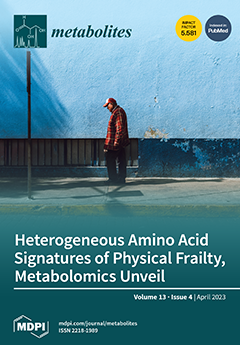The number of
Candida spp. infections and drug resistance are dramatically increasing worldwide, particularly among immunosuppressed patients, and it is urgent to find novel compounds with antifungal activity. In this work, the antifungal and antibiofilm activity of thymoquinone (TQ), a key bioactive constituent of black cumin seed
Nigella sativa L., was evaluated against
Candida glabrata, a WHO ‘high-priority’ pathogen. Then, its effect on the expression of
C. glabrata EPA6 and
EPA7 genes (related to biofilm adhesion and development, respectively) were analyzed. Swab samples were taken from the oral cavity of 90 hospitalized patients in ICU wards, transferred to sterile falcon tubes, and cultured on Sabouraud Dextrose Agar (SDA) and Chromagar
Candida for presumptive identification. Next, a 21-plex PCR was carried out for the confirmation of species level.
C. glabrata isolates underwent antifungal drug susceptibility testing against fluconazole (FLZ), itraconazole (ITZ), amphotericin B (AMB), and TQ according to the CLSI microdilution method (M27, A3/S4). Biofilm formation was measured by an MTT assay.
EPA6 and
EPA7 gene expression was assessed by real-time PCR. From the 90 swab samples, 40 isolates were identified as
C. glabrata with the 21-plex PCR. Most isolates were resistant to FLZ (
n = 29, 72.5%), whereas 12.5% and 5% were ITZ and AMB resistant, respectively. The minimum inhibitory concentration (MIC
50) of TQ against
C. glabrata was 50 µg/mL. Importantly, TQ significantly inhibited the biofilm formation of
C. glabrata isolates, and
EPA6 gene expression was reduced significantly at MIC
50 concentration of TQ. TQ seems to have some antifungal, antibiofilm (adhesion) effect on
C. glabrata isolates, showing that this plant secondary metabolite is a promising agent to overcome
Candida infections, especially oral candidiasis.
Full article






